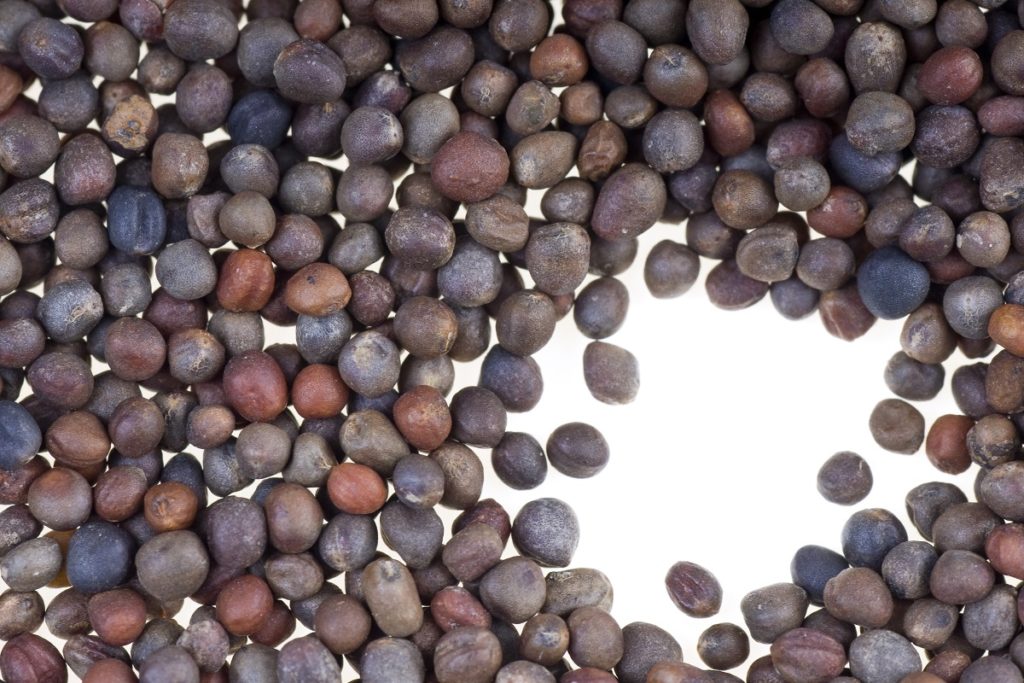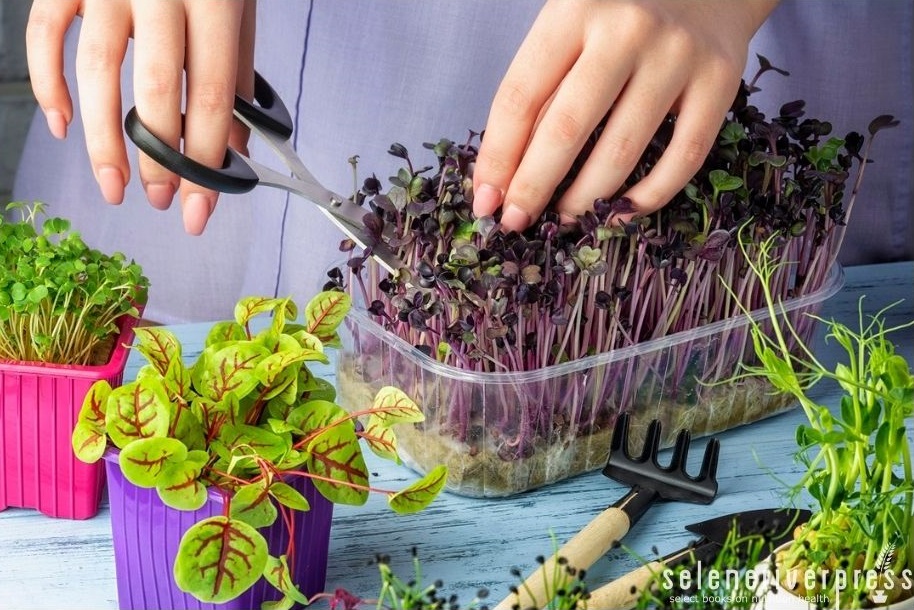I write about nutrition and cook with many different foods. Sometimes, food still brings about new and beautiful discoveries. I researched microgreens for my latest cooking ventures, and I was totally stunned to learn not only about their nutritional value but also the many ways you can use them. I stuffed these tiny, wondrous shoots into my omelet, layered them thickly on a whole grain sandwich, served them as a side dish with olive oil and lemon juice, and, last but not least, I tossed a handful in my Vitamix for my latest invention: mock V8 tomato juice.
Are you getting hungry? Hopefully, I’ll have you eating tons of microgreens in no time. But first, let’s talk about the fact that microgreens, in addition to their versatility, are also a powerhouse of nutrition.
What prompted me to get serious about microgreens, and sprouting in general, was some truly interesting information I learned from a Weston A. Price Foundation chapter leader. Allow me to relate the high points and give you some links in case you too may want to study up on it.
Cancer Prevention and Broccoli Sprouts
From researching the health effects of broccoli sprouts (emphasis on sprouts) for the past twenty years, nutritional biochemist Dr. Jed W. Fahey discovered they have a high concentration of the cancer-preventing substance known as sulforaphane. (Dr. Fahey is Director of the Cullman Chemoprotection Center at John Hopkins Medical School, and I highly recommend the their website for further research.)
In 1999, Dr. Fahey was interviewed by Matt Lauer on the Today Show. This is a must-see discussion for anyone wanting to understand Dr. Fahey’s powerful findings on the relationship between broccoli sprouts and health. I also recommend Dr. Fahey’s more recent interview with Dr. Rhonda Patrick of the website Found My Fitness.
To prevent spoilage, before you go off the deep end and start sprouting, I recommend getting familiar with the tips in this tried and true protocol for growing broccoli sprouts. I would further recommend following this same method for everything you sprout, unless you’re already happy with what you’re doing. (But even then, do at least look at the methodology and instructions to make sure you have a thorough understanding of the process.)
Microgreens: The Purest Form of Plant Nutrition
The website Bootstrap Farmer offers a good breakdown of the benefits of microgreens and why they deserve to be called powerhouse of nutrition. Below are some highlights I’ve paraphrased from the article.
What Are Microgreens?
Microgreens are tiny edible versions of many different vegetables and herbs, but they grow only if the seed is soaked properly and allowed to germinate for approximately a week. Though small, they store an immense amount of nutrients. This is because microgreens grow at the stage when the seeds need the most nutrients to develop their roots.
What Does the Science Say?
The Bootstrap Farmer in the same article provides many interesting facts about the science of microgreens:
“Let’s look at the most ‘authoritative’ source we have, the US Department of Agriculture, which has said in a study that the leaves of almost all microgreens have ‘four to six times more nutrients than the mature leaves of the same plant.’
“Dr. Gene Lester, a USDA researcher in the study points out, ‘All of these nutrients are extremely important for skin, eyes, and fighting cancer and have all sorts of benefits associated with them.’
“The University of Maryland recently did a study on 25 varieties of microgreens and got some interesting results. Microgreens almost all had higher nutrient concentrations as we’ve already found, but all micros posed varying benefits and levels of vitamins. For example, microgreens are rich in vitamin C but low in vitamin E. Green daikon radish microgreens were rich in vitamin E but low in lutein compared to amaranth, cabbage or cilantro.
“So, if you’re looking for a supplementation of a particular vitamin through microgreens, this is the study to dig into.
“The same study also tested microgreens on mice, controlling for several differing diets. This showed that microgreens seemed to improve factors like blood-cholesterol levels and weight control. These are only mice, but still worth noting.”
Most Nutritious Microgreens
The Bootstrap Farmer notes in the same study referenced above that the four most nutrient dense microgreens are red cabbage, green daikon radish, cilantro, and garnet amaranth.
The website Treehugger lists nine other microgreens full of mega-nutrients: arugula, broccoli, chia, clover, kale, basil, pea shoots, radish, and sunflower seeds. (Click on the article link to learn about their specific nutrients and vitamins.)
Before you try sprouting your own microgreens, be absolutely sure that you’re using only organic and pesticide-free seeds. I found the following three suppliers, but there are many others. Please do your own research since I’ve not done business with the suppliers below. (I also cannot approve any of the products and especially supplements that you will find on these websites. Buyer beware!)
The Perfect Place for Easy Microgreen Recipes
At the website Urban Cultivator, I found eight wonderful microgreen dishes for the novice microgreen cook. They will no doubt make you salivate as you get started on your new sprouting venture.
If you’re really serious about microgreens, you may want to invest in The Microgreens Cookbook: A Good Water Farms Odyssey by Brendan Davison. In addition to creative recipes, you’ll find lots of beautiful photographs, facts, tips, and more.
[xyz-ihs snippet=”Begin-Authors-Note”]Afterthoughts from the Traditional Cook
One of my thoughts as I was writing this blog post is that soon, the deepest part of winter will be here. What a joy it will be to make yourself a nutritious salad at home! And no longer will you need to get in the car and head out to the grocery store for some boxed lettuce. The recipes above, my dear readers, should make it much easier this winter to get those healthy greens into your system. Alongside happy thoughts as we watch the snowflakes gently grace our yards, let’s thank and pray for people like Dr. Fahey and others who taught us that we simply need to soak seeds, wait a week, and voila! Vitamins galore, all made by Mother Nature. And maybe we will even help our bodies develop the necessary forces to prevent any cancer coming our way.
Be blessed, dear reader
Maria Atwood, CNHP
Disclaimer from Maria Atwood, CNHP: I am a Certified Natural Health Professional, CNHP, not a medical doctor. I do not diagnose, prescribe for, treat, or claim to prevent, mitigate, or cure any human diseases. Please see your medical doctor or health practitioner prior to following any recommendations I make in my blog posts or on my website.
Images from iStock/Ekaterina-84 (main), Togapix (tomato juice), pixelmaniak (broccoli seeds).




